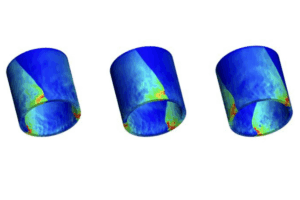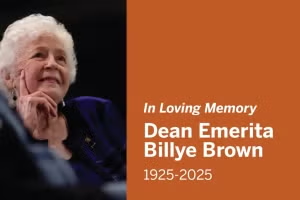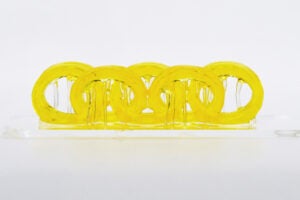AUSTIN, Texas — Cotton, cattle, oil, politics and Neiman Marcus take center stage at a new exhibit at the Texas Memorial Museum, a fashion show billed as unmistakably Texas. Where else could you find a split skirt, a pair of snake-proof boots and a gal leg spur in the same room with a presentation gown from the Tyler Rose Festival?
More than 40 costumes from 1836 to the 1970s are featured in the exhibit, which can be seen through Sept. 28. The Texas Memorial Museum is located on The University of Texas at Austin campus, and the exhibit was installed by a student and faculty committee headed by Dr. Ann Dupont.
The exhibit begins with a serape found at the San Jacinto Battleground and thought to have been worn by Mexican President Santa Anna. Alongside the serape is a finely detailed charro saddle also attributed to Santa Anna. The collection is highlighted as well by hand-sewn ranching clothes and gowns from the 1920s and 1930s marketed by Neiman Marcus to the newly wealthy wildcatters of East Texas.
“Even though Texas was a frontier not that long ago, its residents always have been fashionably dressed,” said Dupont, the curator and a UT Austin faculty member specializing in fashion merchandising. “From Sam Houston to present day, Texans like to present themselves in a more distinctive and flamboyant manner. Houston, for instance, wore an intriguing mix of linsey-woolsey hunting shirt, pantaloons, a serape and a fur-trimmed hat to his 1841 presidential inauguration.”
The TMM exhibit is exciting not only for those interested in social history, but serves as an inspiration to young designers. “I walked in the other day and a little girl, who was on one of the tours, was kneeling down sketching one of the dresses. It absolutely made my day,” said Dupont.
Throughout the history of the Lone Star State, three pillars of economic strength have represented the dream of success — cotton, cattle and oil. By 1890, Texas was the largest cotton-producing state in the country. It also recovered economically more rapidly than the former Confederate states to its east due to cattle and the trail drives, Dupont pointed out.
The substantial profits from the cotton trade were reflected in affluent lifestyles in Texas during the late Victorian period. “Economic prosperity, the ability to travel and active lifestyles for women along with additional resources and improved technology led to larger, more differentiated wardrobes,” said the curator. The cage crinoline of the mid-century gave way to the bustle silhouette. Included in the exhibit is bustle day dress from 1880 and an afternoon bustle gown from 1892.
Commercial wool and mohair production also impacted the state’s economy — as recently as 1993, Texas provided 90 percent of the domestic mohair industry.
And then came Texas crude. Virtually overnight, farmers became multimillionaires, and one family took as its mission to dress them.
“Founded by Herbert Marcus and his sister, Carrie Neiman, Neiman Marcus was at the right place at the right time,” said Dupont, adding that the new and exclusive shopping place for fashionable women opened Sept. 6, 1907, in Dallas — the closest big city to East Texas oil fields.
“The carriage trade added the barrel brigade to its selective market and retailing history was made,” she said. “Neiman Marcus managed to do something quite remarkable — they made arrangements with designers from all over the world to bring haute couture fashion to Texas.” Flapper gowns from the 1920s, gowns worn to the opening of the Shamrock Hotel in Houston, gowns worn by Texas political wives, and pageantry gowns from San Antonio and Tyler festivals also are featured in the exhibit. “When oil wildcatter Glenn McCarthy opened his $21 million Shamrock Hotel, it was described by The New York Times as a ‘country fair in ermine,'” said Dupont. “It was attended by the wealthy and well known from around the world, and was the hotel opening depicted in the movie Giant.” Most of the items in the exhibit come from a collection of 3,000 historic textile, apparel and accessory artifacts belonging to the department of human ecology. The dominant category is western daytime and evening female dress dating from 1820, but ethnic costumes, male and children’s attire, accessories and textiles also are represented. Classic American quilts, coverlets, paisley shawls, household linens and several oriental textiles complete the collection.
“Our collection is one of the best kept secrets in the state,” said Dupont. Since the department does not have exhibition space, the TMM exhibit is the first time items have been displayed. Primarily, the collection has been used as a tool for teaching and student reference.



